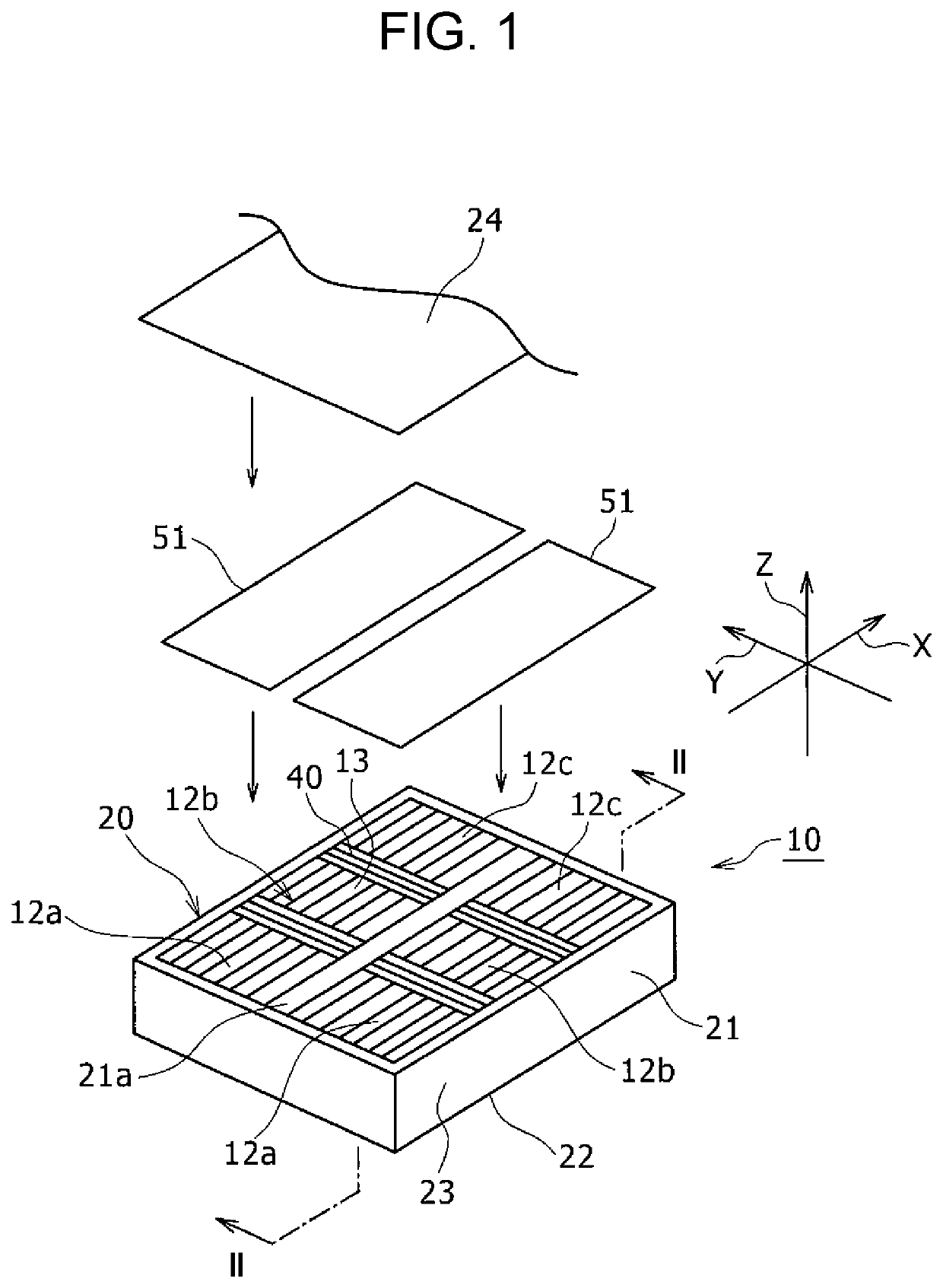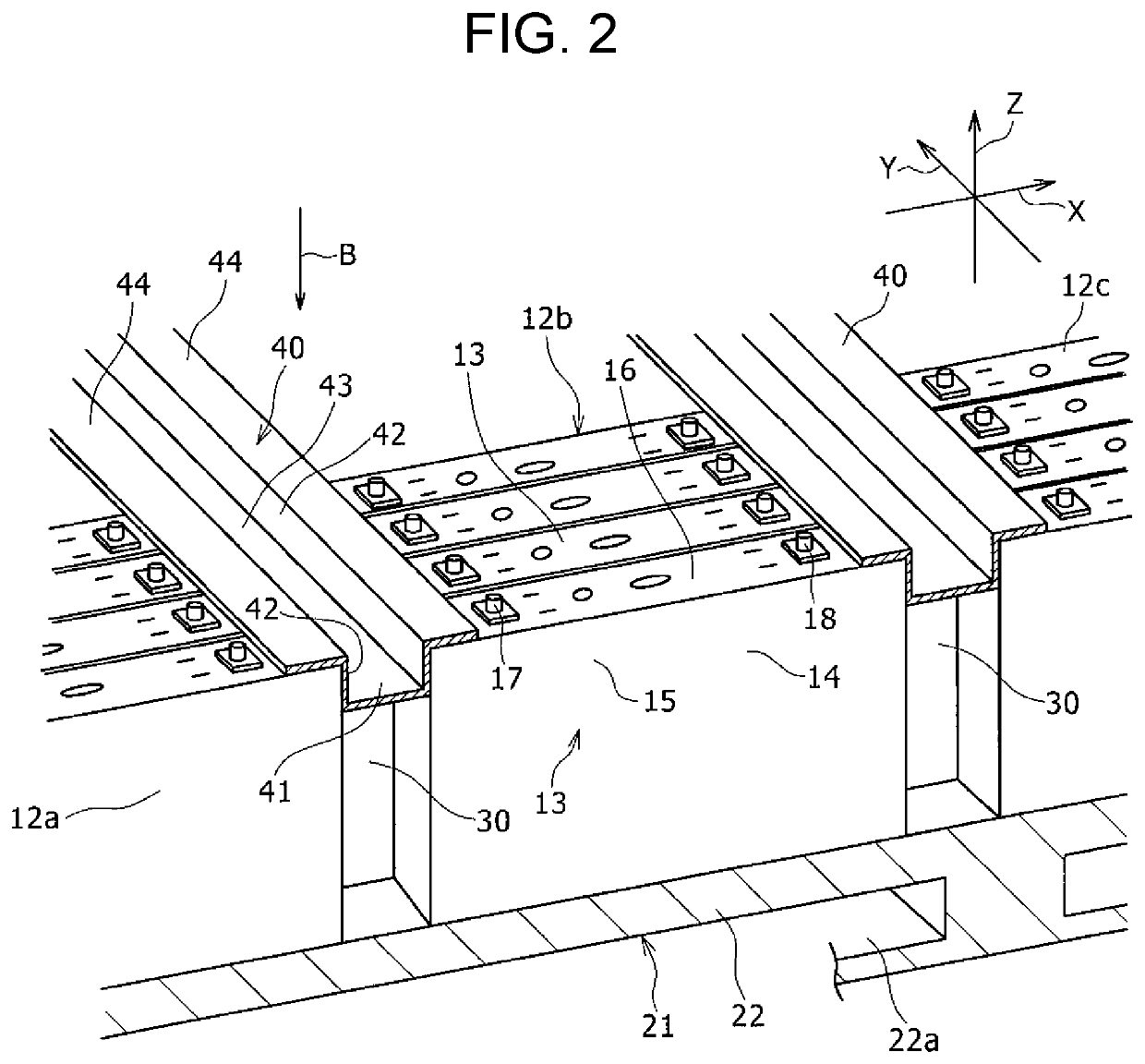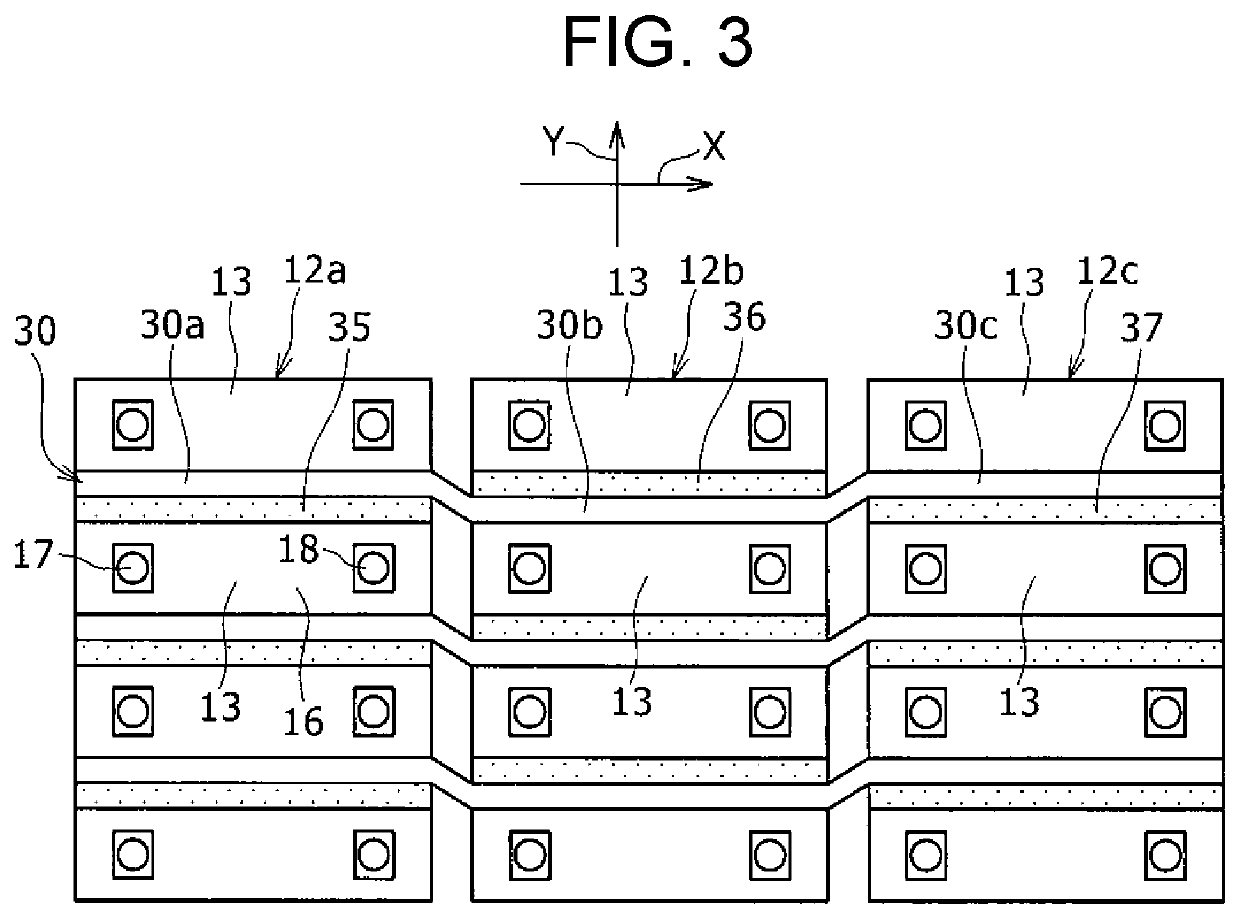Battery pack
a battery cell and battery technology, applied in cell components, electrical equipment, electrochemical generators, etc., can solve the problems of high temperature of the battery cell, lack of heat transfer route, and thermal impact spreading to the battery cells surrounding abnormal battery cells, so as to reduce the variation in temperature, increase energy density, and inhibit the effect of thermal impa
- Summary
- Abstract
- Description
- Claims
- Application Information
AI Technical Summary
Benefits of technology
Problems solved by technology
Method used
Image
Examples
Embodiment Construction
[0015]A battery pack according to an example of an exemplary embodiment will be described below in detail. Drawings referenced in a description of the exemplary embodiment are schematically drawn, and dimensions and proportions of configuration elements illustrated in the drawings may differ from those of actual components. Thus, specific dimensions and proportions should be understood in view of the following description. In the description given herein, “substantially identical” means absolutely identical, as well as virtually identical, for example. Other words modified by “substantially” should be interpreted in the same manner. An “end” of an object means an edge and a surrounding portion of the object. Shapes, materials, piece counts, and other particulars described below are provided for the purpose of illustration and may be changed depending on specifications of battery packs. In the following description, identical or equivalent components are denoted by identical referenc...
PUM
| Property | Measurement | Unit |
|---|---|---|
| thermal conductivity | aaaaa | aaaaa |
| thermal conductivity | aaaaa | aaaaa |
| thermal conductivity | aaaaa | aaaaa |
Abstract
Description
Claims
Application Information
 Login to View More
Login to View More - R&D
- Intellectual Property
- Life Sciences
- Materials
- Tech Scout
- Unparalleled Data Quality
- Higher Quality Content
- 60% Fewer Hallucinations
Browse by: Latest US Patents, China's latest patents, Technical Efficacy Thesaurus, Application Domain, Technology Topic, Popular Technical Reports.
© 2025 PatSnap. All rights reserved.Legal|Privacy policy|Modern Slavery Act Transparency Statement|Sitemap|About US| Contact US: help@patsnap.com



